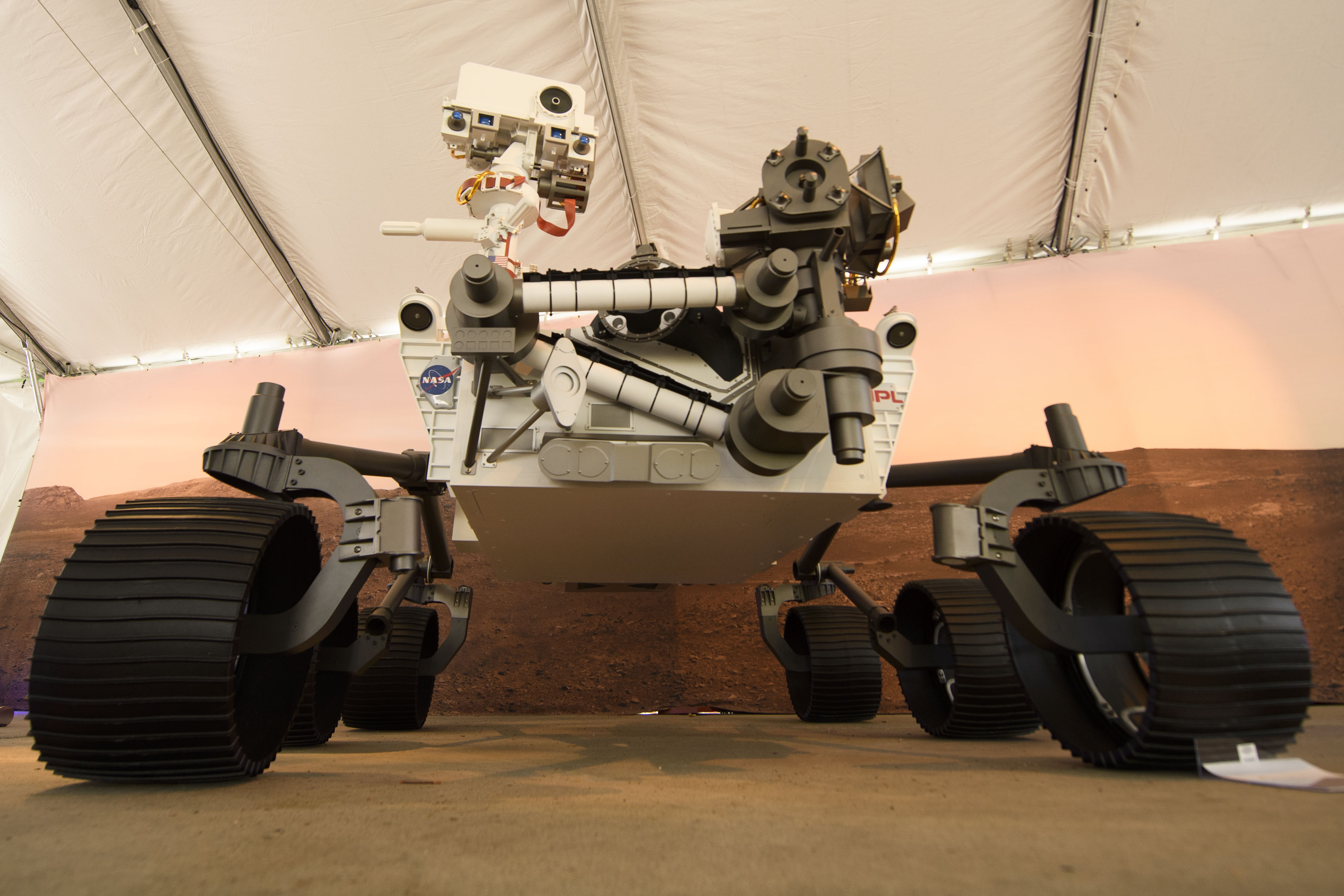[ad_1]
PASADENA (CBSLA) — After a nearly seven-month journey spanning almost 300 million miles, the NASA rover known as Perseverance will land on Mars Thursday afternoon.

A full scale model of the Mars 2020 Perseverance rover is displayed at NASA’s Jet Propulsion Laboratory on Feb. 16, 2021, in Pasadena, Calif. (Getty Images)
The SUV-sized Perseverance, which was built at the Jet Propulsion Laboratory in Pasadena, was sent to the Red Planet on July 30 of last year from Cape Canaveral, Fla.
The landing is scheduled to occur at 12:55 p.m. Pacific time, according to JPL.
The last leg of the trip, when Perseverance descends on its own, is the riskiest part of the mission. NASA engineers call it the “seven minutes of terror.”
“All the way from the software to the hardware working, there’s so many things happening in these seven minutes, that’s why its so nerve-wracking,” said Gregory Villar Wednesday, a systems engineer with NASA JPL. “We’re all gonna be glued to our seats waiting for the best.”
“The Perseverance team is putting the final touches on the complex choreography required to land in Jezero Crater,” Jennifer Trosper, deputy project manager for the mission at JPL, said this week. “No Mars landing is guaranteed, but we have been preparing a decade to put this rover’s wheels down on the surface of Mars and get to work.”
The rover’s mission is to look for signs of past microbial life and collect rock and soil samples that will eventually be returned to Earth.
“One of the key steps that that Perseverance is taking is collecting samples that can be brought back to Earth in the future and then analyzed with all the terrestrial laboratories we have, which should actually provide us a definitive answer to that question,” said Kenneth Farley, a NASA Mars 2020 project scientist at Cal Tech in Pasadena.
The rover is also equipped with a mini helicopter that will become the first ever flown on another planet. The “Ingenuity” helicopter will allow for a wider exploration of the planet’s surface.
Last year, Katie Stack Morgan, a deputy project scientist at JPL, said the rover’s landing spot, Jezero Crater, is home to “one of the best preserved deltas on the surface of Mars.” She said the location will give the rover access to some of the oldest rocks in the solar system.
Perseverance’s primary science mission is astrobiological, searching for signs of ancient life. The mission is a natural extension of earlier rover missions that have uncovered evidence that the planet once featured running water. Scientists believe such water flowed in an ancient river and poured into a lake — in what is now Jezero Crater.
The historic recovery of Mars soil and rock samples will be done in partnership with the European Space Agency. The Perseverance rover will drill and collect samples, then store them on the surface of the planet. Current plans call for the launch of a “fetch rover” in 2026 that will collect the samples, place them in a rocket that will launch from the surface of Mars, rendezvousing with an orbiter that will capture the samples and return them to Earth.
The study of those samples will address “some big-picture questions,” she said, including “how did the surface and climate of Mars evolve over time, how do rocky planets form and differentiate, and, of course, was life ever present on Mars.”
(© Copyright 2021 CBS Broadcasting Inc. All Rights Reserved. City News Service contributed to this report.)
[ad_2]
Source link